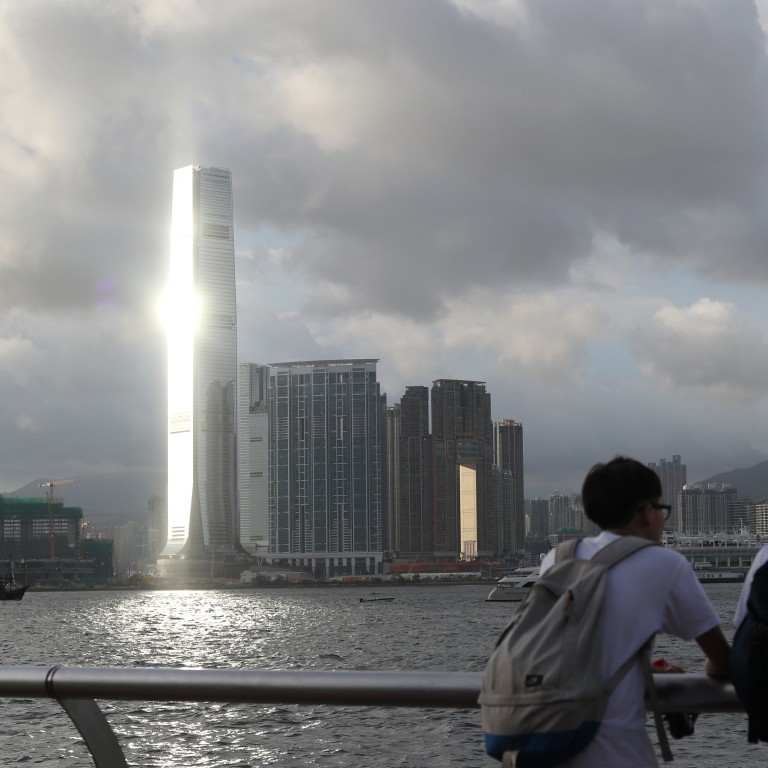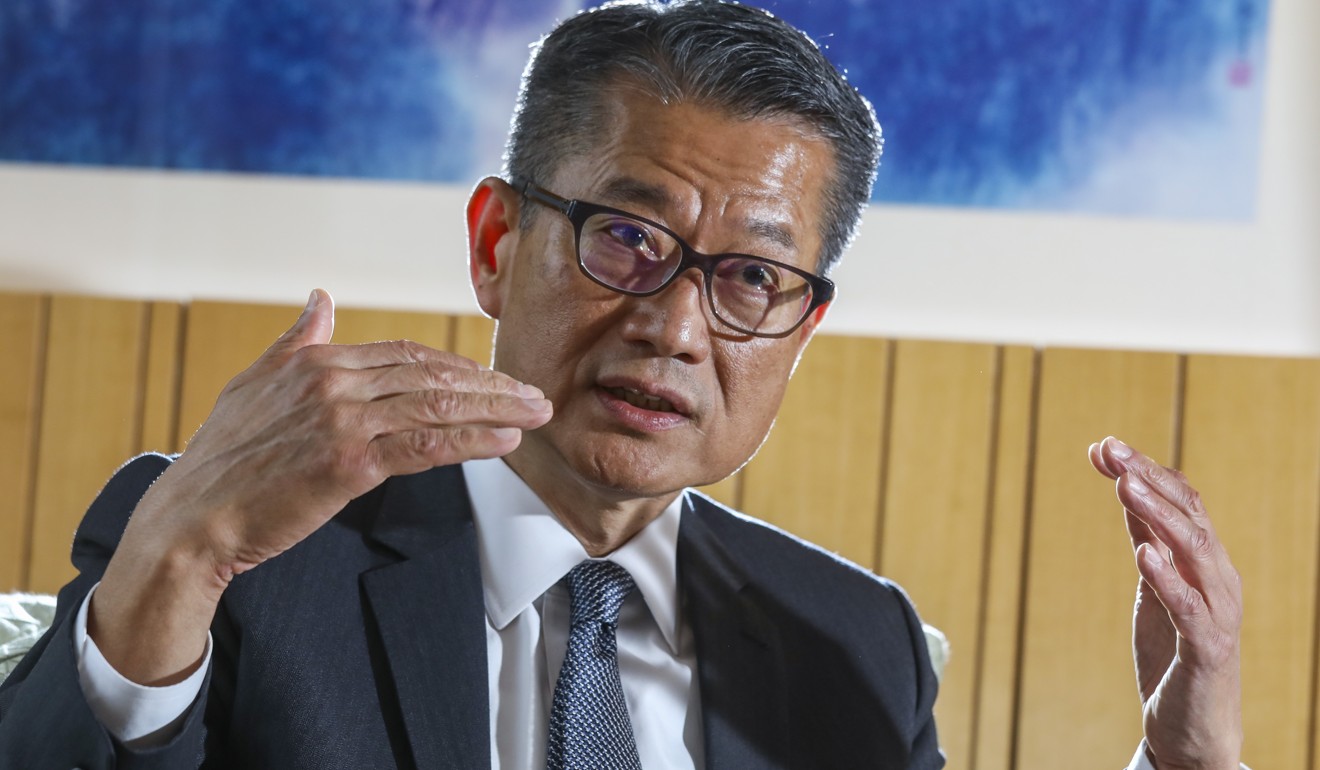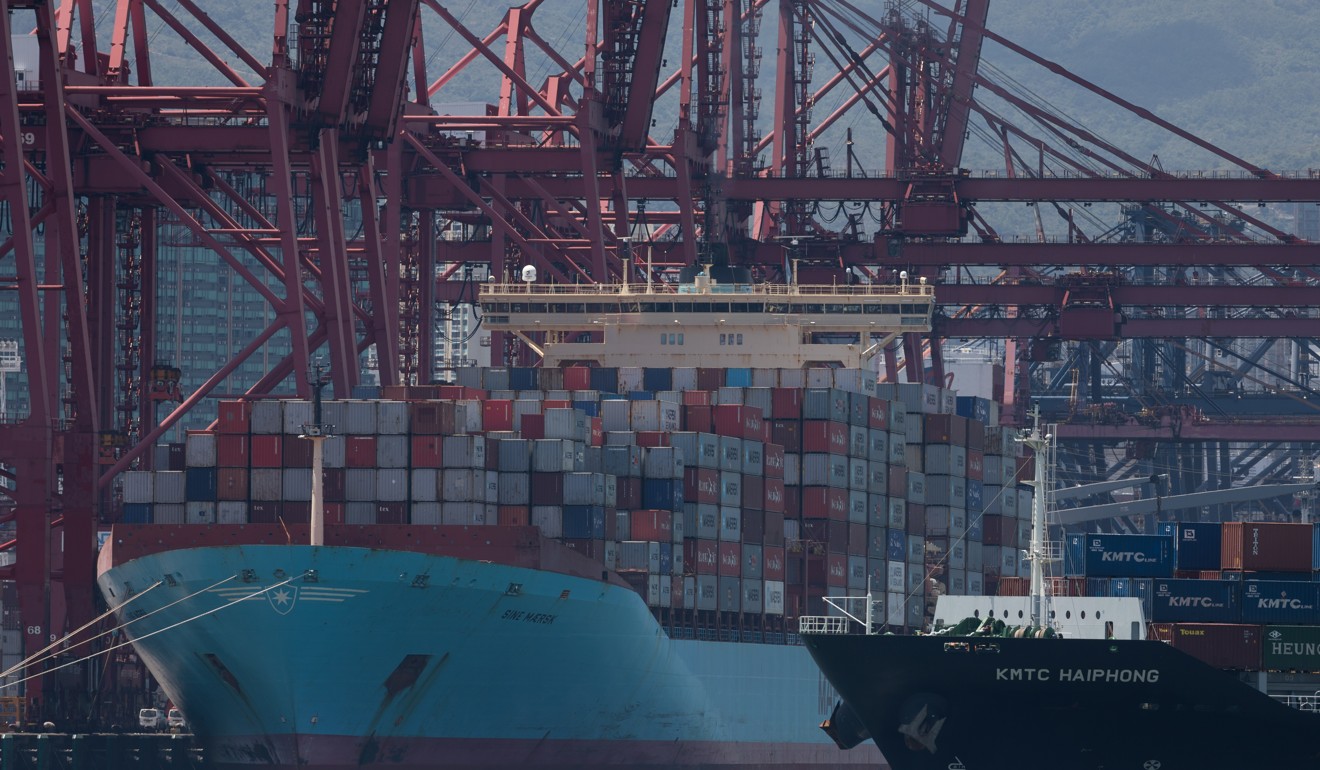
Hong Kong finance chief Paul Chan doubles down on 3 per cent growth projection despite dark clouds in US-China trade war
- He says estimate was made when both superpowers were expected to reach a deal, but even if the mood has changed, it is still ‘not appropriate’ to adjust figure
Hong Kong officials will maintain their projection for the city’s annual economic growth at about 3 per cent, despite increasing uncertainties caused by the US-China trade war, the city’s finance chief said on Saturday.
Financial Secretary Paul Chan Mo-po said the projection was made when China and the United States were widely expected to reach a deal. But he added that the prediction of an annual economic growth of 2 to 3 per cent would stay for now even if the trade war situation had worsened.
“There are still many uncertainties about the trade war. It’s not appropriate for us to adjust the projection significantly or the market may have misunderstandings,” Chan said on a radio programme.
It’s not appropriate for us to adjust the projection significantly or the market may have misunderstandings
Hong Kong announced its revised first-quarter GDP growth at 0.6 per cent on Friday – the slowest quarterly increase in a decade.
The city, a free port, has been caught in the crossfire of the trade war, which has harmed its external trade, retail sales, financial sentiment and the economy in general.

Chan said the predicted annual gross domestic growth was based on the assumption that the economy would pick up in the second half of the year with a positive view that a trade deal would form.
The figure was not decided “until the last minute” before he gave the annual budget speech in February, according to him.

Chan said the amount of trade between China and America via Hong Kong accounted for 9 per cent of the city’s total amount of exports, adding that “the risk is controllable”.
But he also pointed out that the government was more concerned about the trade war’s impact on the global supply chain, as international manufacturing bases might move out of China, affecting Hong Kong’s business activities on the mainland.
Show sincerity or cancel trade talks, Chinese state media tells US
He said officials were mindful of the “systematic risks” on the financial market such as capital flows in the banking system, stock market fluctuation and liquidity in fund investment.
The government will review its annual economic growth projection in August.
The trade war took a dramatic turn earlier this month with US President Donald Trump announcing 25 per cent tariffs on US$200 billion worth of Chinese products such as food and clothing. Trump also threatened to slap the levy on another US$300 billion worth of Chinese goods.
In retaliation, China imposed 25 per cent tariffs – starting next month – on some US$60 billion worth of American goods already affected by levies.
On Saturday, Hong Kong’s Secretary for Commerce and Economic Development Edward Yau Tang-wah said at a panel of the Asia-Pacific Economic Cooperation (APEC) forum that the world was “fast locking into a very worrying downward spiral” with a latest forecast of global trade growth at 2.6 per cent this year, compared with 3 per cent last year and 4.6 per cent in 2017.
“The headwinds and trade disputes remain gusty with the resurrection of tariffs as a weapon of trade conflicts ... The collateral damage is actually felt by many, if not all, in this region as well,” Yau said.
Baptist University economist Billy Mak Sui-choi said a more accurate forecast of Hong Kong’s GDP growth could only be made by the third or fourth quarter, by which time it would be clearer to tell the trajectory for most business activities.
Hong Kong’s GDP grinds to near halt at dismal 0.5 per cent growth
“You can understand why the government has decided to stay put for now,” he said.
Mak said the trade war so far did not affect much of Hong Kong’s exports, unless it further escalated to cover US$300 billion more of goods, which would include items such as toys, jewellery, watches and electronic products.
He said he believed the stock market would see the damage soonest, but pointed out that the city had survived previous stock market downturns relatively unscathed, because only 30 per cent of market investors were individual ones.
Chan said the government would fully support small businesses if they took a hit in the trade war, because such firms employed about half of the city’s workforce.
Measures include providing backing to business orders and giving financial support to explore overseas markets.
“We understand when the economic environment is challenging, small and medium-sized businesses are facing the greatest pressure.”
He added that the government still had other strategies, which he declined to reveal, to stimulate consumption if the economy slowed down.
According to a World Trade Organisation review of statistics, Hong Kong was ranked the world’s seventh leading importer and exporter of merchandise trade in 2017.

